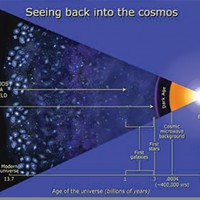[
{
"name": "Top Stories Video Pair",
"insertPoint": "7",
"component": "17087298",
"parentWrapperClass": "fdn-ads-inline-content-block",
"requiredCountToDisplay": "1"
}
]
Ingenuity, "Ginny" to its friends, will never fly again. The little Mars-based helicopter-drone landed badly on its 72nd flight on Jan. 18, 2024, damaging all four of its carbon fiber wingtips and ruling out future flights. But in the three years since being released from the underbelly of its "mothership" the Mars rover Perseverance, it has accomplished much more than the original five-flight goal. In short, Ingenuity has been a stunning success and NASA's experience with the first machine to fly on another world will change the future of space exploration in two ways. First, we now know powered flight on other worlds with atmospheres is indeed possible; second, a space-faring vehicle can be built comparatively cheaply with mostly off-the-shelf components that were originally developed for smartphones.
To stress the first point, a year before Ingenuity began its mission, NASA associate administrator Thomas Zurbuchen said, "We don't even know if powered, controlled flight of an aircraft at Mars is possible." As for the second, look no further than Ingenuity's "brain," a half-ounce 2015-era Qualcomm Snapdragon 801 chip found, for instance, in Samsung's $99 Galaxy S5 phone. Even so, "The processor on Ingenuity is 100 times more powerful than everything JPL has sent into deep space, combined," according to Ingenuity Project Manager Teddy Tzanetos.
Ingenuity barely made it past the NASA qualifying rounds, with several of the Mars 2020 administrators responsible for Perseverance concerned the drone would distract from the main mission, seeking signs of ancient life. Commenting on the month-long period during which Ingenuity was scheduled to make five demo flights, chief scientist Kenneth Farley sniffed, "... spending 30 days working on a technology demonstration does not further [Perseverance's] goals."
As it turned out, one month became nearly three years, and five flights extended into 72. And far from simply fulfilling its "technology demonstration" goal, Ingenuity's role morphed into acting as a scout for Perseverance, helping the mission team determine the rover's future route and analyzing potential targets for scientific investigation. This was all made possible by Ingenuity's 60-strong design team, which used almost entirely commercially available smartphone components. As veteran science writer Eric Berger put it, "If there had been no iPhone, there would have been no Ingenuity."
Mars' gravity — 38 percent of Earth's — is more than offset by the planet's one percent of Earth air density. Ingenuity was flying at the equivalent of about 100,000 feet on Earth. (The maximum altitude for helicopters is about 25,000 feet.) Ingenuity compensated for the thin air with its four-feet long rotor blades. The twin counter-rotating blades spin at up to 2,700 revolutions per minute, slower than comparably sized drones on Earth, which have much shorter blades. A better comparison than spin speed is the velocity of the tips of the rotor blades. For Ingenuity that's up to Mach 0.7 (i.e. 70 percent of the speed of sound), while the tips of my little DJI drone barely make it to Mach 0.02.
In the future, Martian drones will act in a reconnaissance role, as well as retrieving Perseverance's sample capsules (left on the Martian surface) for return to Earth for analysis. In addition, NASA plans to send Dragonfly, a nuclear-powered, automobile-size drone, to Saturn's intriguing moon Titan in 2028. With the success of Ingenuity, flying Titan doesn't look quite so daunting as it did five years ago.
Barry Evans (he/him, [email protected]) compares Ingenuity to the Wright Brothers' first flights at Kitty Hawk in 1903.
Editor's note: This story has been updated to correct the date of Ingenuity's 72nd flight.Speaking of...
-

Super Blue Moon Set to Rise
Aug 23, 2023 -

'Blood Moon' Lunar Eclipse Starts Just After Midnight
Nov 7, 2022 -

NASA's Origami Telescope (Part 2)
Dec 9, 2021 - More »
Comments (2)
Showing 1-2 of 2
more from the author
-
Doubting Shakespeare, Part 1: Stratfordians vs. anti-Stratfordians
- Apr 25, 2024
-
A Brief History of Dildos
- Apr 11, 2024
-
Eclipse!
- Mar 28, 2024
- More »
Latest in Field Notes
Readers also liked…
-
Trouble on the Line: The Reality Part 2
- Nov 3, 2022

































